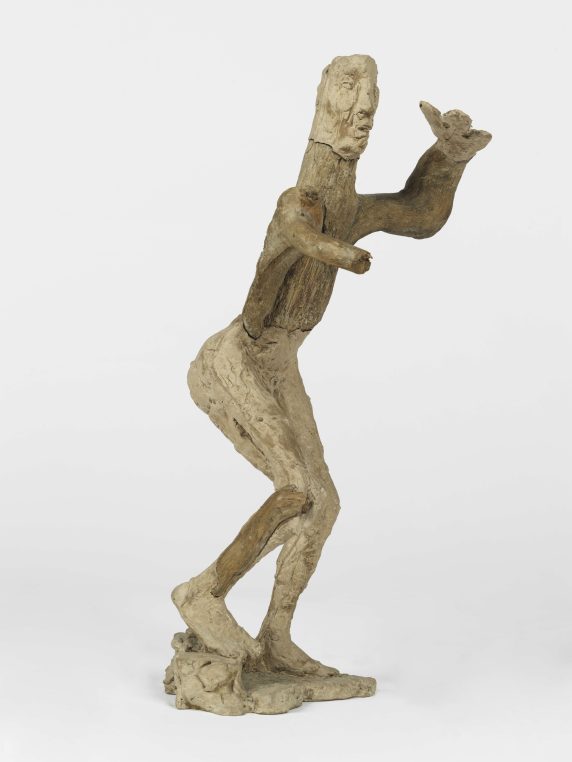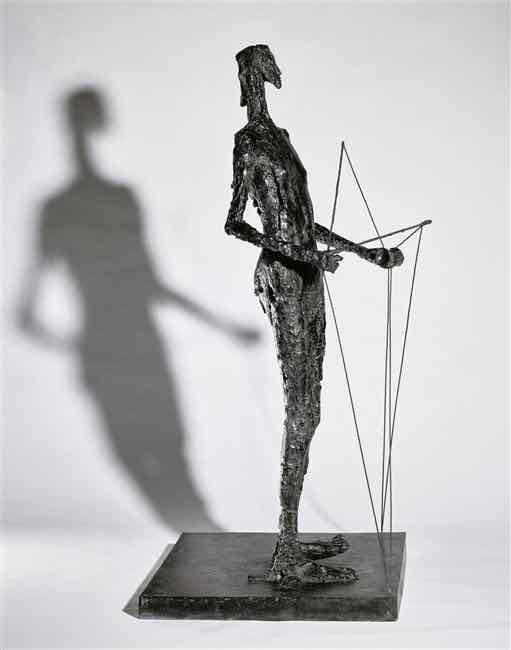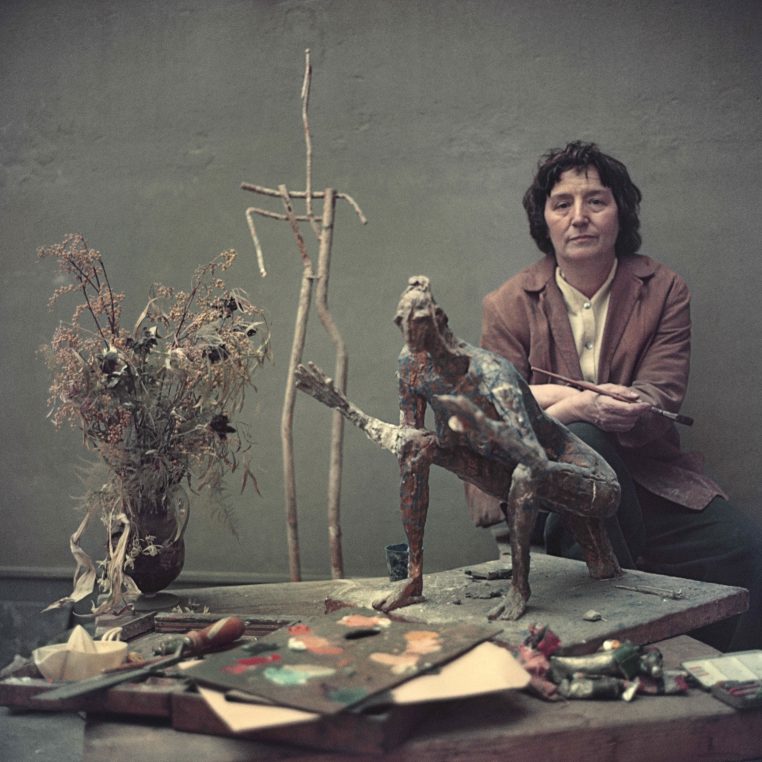
La Sauterelle, grande, 1955-1956, La Sauterelle, moyenne, 1945, La Sauterelle, petite, 1944, (The Grasshopper), a little heart is engraved in the large one.
The first woman to be exhibited at Museum of Modern Art, sculptor Germaine Richier (1902-1959), studied in Bourdelle’s studio from 1926 to 1929, and considered him as her mentor. Her works presented at Centre Pompidou until June 12, are so forceful that they could intimidate you at first, but the scenography by Laurence Fontaine on the 6 th floor of the museum, is light and aerial and the eye wanders with great ease. Born near Montpellier (1902-1959), Richier studied first there at the University of Arts before going up to Paris. At Bourdelle’s she met her future husband the Swiss Otto Bänninger and lived in Montparnasse among the artists of the time, Giacometti, Max Ernst, Picasso…
Little known for most of the XX th century, she died young and left a very intriguing corpus of sculptures. Fascinated since childhood by the insects of the Mediterranean countryside and Camargue, she filled her studio with grasshoppers, bats, and mantises. She liked to create hybrid forms like her “Forest Man”, where parts of the work are in olive tree and parts in clay. And her studio partly recreated in the show is a wonderful mix of little studies, pieces of wood and metal, material and strange instruments.
She read a lot and her imagination is nourished with ancient myths and fabulous monsters. Her “Six Headed horse” is one example and her various illustrated books are another. The most extraordinary part of the exhibition, besides the first room where sixteen heads welcome the visitor, is the room with wire sculptures started in 1946. Her sense of space is explored there and each sculpture seems to be dancing. A startling “Don Quixote” from the Pinault collection, “Diabolo”, “The Fight”, and the suspended “Devil with Claws”, from 1952 with its network of interlaced wires which hangs from the ceiling, are fabulous works.
The curator Ariane Coulondre was excellent in describing the different facets of the artist and recommended that we listen to her radio interviews which are aired in the studio. When asked if it was hard to be a woman sculptor at a time when there were mostly men, she said that she had never suffered for the situation, that good art had no genre. A series of colored sculptures presented with paintings by Zao Wou Ki and Maria Helena Vieira da Silva, show us how intimate all these artists were in the 1950’s. A strong Christ in colored glass and led, ordered for the church of Breteuil (Oise) represents some of her research in other material and in color.
The show is very varied with multiple press clips and all aspects of her style from Bourdelle inspired fencers, to abstract stone in 1956. She became more and more daring with experience.
At Centre Pompidou until June 12.
Share this Post




